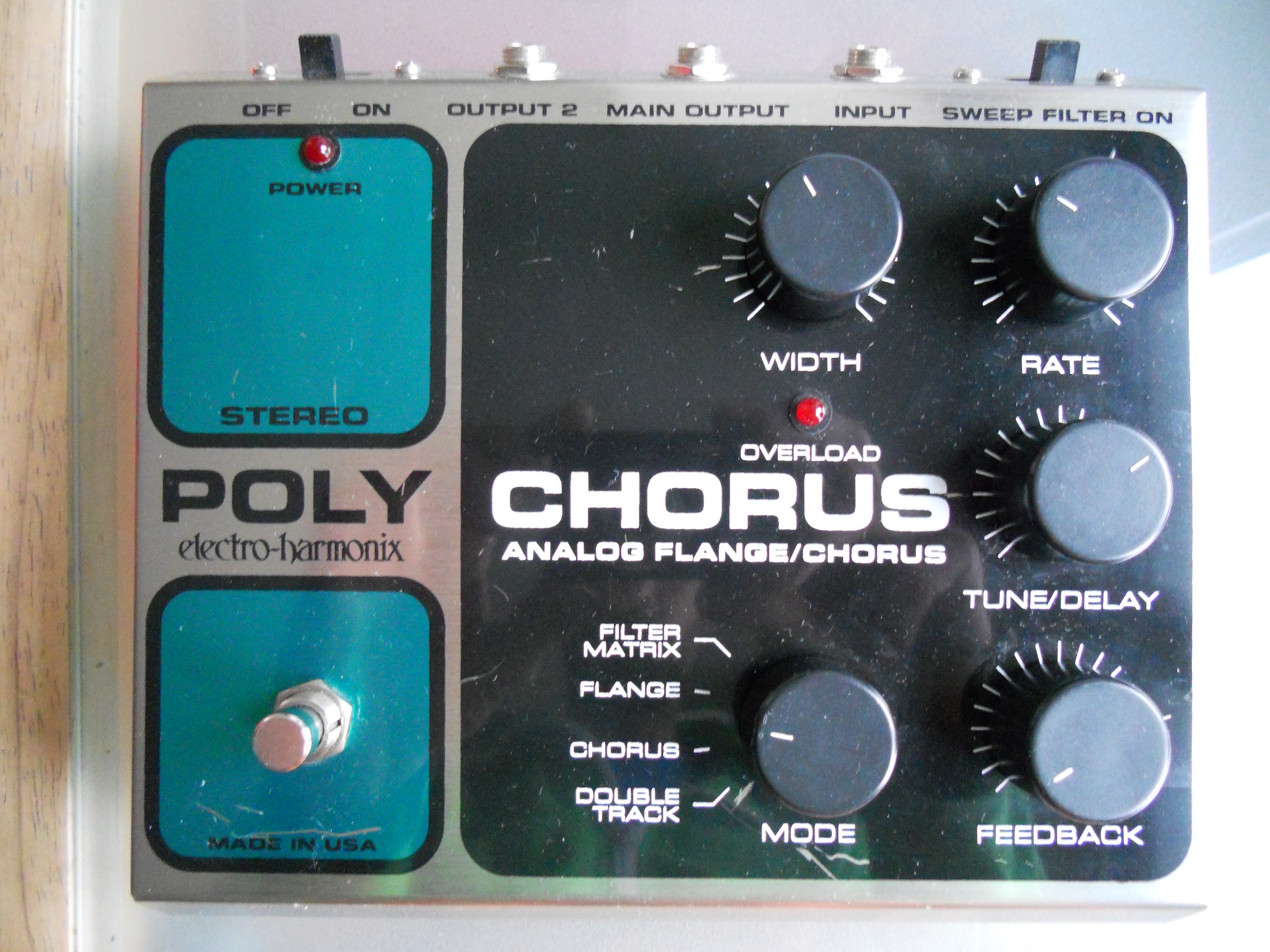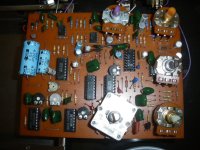Δες και ένα κείμενο απο κάποιον που ξέρει πολλά...
Mark Hammer:
Not sure about what each of the trimpots does in a Polychorus, but here is a listing of what they *might* do. These are all common functions in that sort of pedal:
1) In order to pass signal, delay chips require a DC bias voltage that the audio signal sits "on top of". Some companies take an educated guess and do this with fixed resistors. Other companies use a trimpot and adjust the bias voltage to optimize it for that delay chip. In some instances, it is possible to use a single trimpot to set the bias *once* and distribute that bias voltage to multiple chips. In other cases, companies will use a separate bias trimpot for each BBD chip on board. The trimpot is generally located near the BBD chip. Setting it improperly will get you a distorted delay signal (just off the bias voltage it needs to be) or no delay signal (way off where it needs to be).
2) Because of their internal architecture, delay chips generally provide two complementary outputs driven by the two clock signals: one for "tic" and another for "toc". The sample that passes through the delay chip in interleaved fashion is then stitched together to make a whole sample by mixing the two outputs together. Most companies will do this by simply using equal-value resistors from each output to a mixing point. Because the two complementary paths are pushed along by opposite phase clock signals, though, if you mix the outputs in *just* the right proportions, you can get the clock signals to cancel out at the mixing point. Consequently, many delay-chip-based pedals have trimpots linking the two BBD outputs so that maximum clock cancellation and lowest noise can be achieved. If this strategy is adopted, there would be one for every BBD chip. If the chips happen to be a SAD1024, there will be two such trimpots for output pairs A/A' and B/B' (see the datasheet).
3) Because of component tolerances, it is often difficult to nail what the part values should be for the MOST regeneration before you get runaway feedback. Consequently, many companies, in an effort to get as much regeneration as is feasible, use a combination of a regen control on the panel and a trimpot on board. During setup, the Regen is set for max, and the trimpot adjusted to the point where there is runaway feedback and then eased back just until it stops. There is normally only one such trimpot.
4) Maximum "effect" is achieved for many types of effects when the dry and wet signals are mixed inthe right proportions. Some companies will provide you a control for mixing, but the majority will save on panel space, pots, knobs, etc., by having a trimpot on-board that sets the wet/dry balance. In the case of E-H pedals, this is often something to set how much wet signal is mixed in. If all the other trimpots are set right, what you'd hear when twiddling this one is a reduction in the intensity of the effect so that the delay signal moves to the background.
5) Chorus sounds require that the clocking produce a certain range of delay times. E-H has included "clock-trim" controls on board in several of their designs, such that the delay time can be adjusted to achieve the prototypic sound for that particular product/effect - delivering the same sound all the time, no matter what other deals on parts resulted in component substitutions.
6) The Polychorus is one of E-H's interesting combinations of delay and envelope control. As is discussed here quite often, matching the sensitivity of an envelope follower to produce the right amount of parameter change in response to picking differences and instrument differences is a common problem. It wouldn't surprise me a bit if one of the trimpots were associated with the sensitivity of the envelope follower.
That's not all the possibilities, but probably most of them. Tell us what's in the pedal in the way of chips, as well as the physical poximity of the trimpots to the chips, and we can probably tell you what the trimpots do and how to tinker with them.



